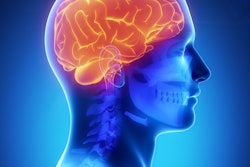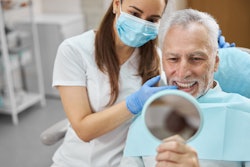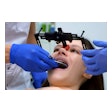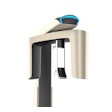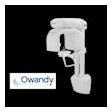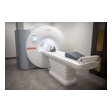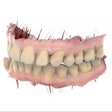There is a tremendous amount of research out there for dental professionals to absorb. However, time is always a factor in not only learning but also implementing those nuggets of knowledge that are picked up along the way.
 Dr. Colin Richman.
Dr. Colin Richman.
Knowing that time is a factor, Dr. Colin Richman, a diplomate of the American Board of Periodontology, a former faculty member at the University of Connecticut and Emory University schools of dentistry, and a current faculty member in Augusta University's department of graduate periodontics, is here to give you the highlights of five different recent research-focused articles from various journals.
Dr. Richman often discusses research in his nationwide lectures. As a note, all revenues generated through those programs are donated to Dr. Richman's family research foundation for clinical research in dentistry, administered through the American Academy of Periodontology. You can learn more about Dr. Richman and contact him via his website.
Below is Dr. Richman's PICO (problem, intervention, comparatives, and outcomes) summary of four chosen articles.
The relationship between tomographic sagittal root position of maxillary anterior teeth and the bone housing
Read the study.
Problem: Evaluate the relationship between the sagittal root position of the maxillary anterior teeth and the associated bony housing
Intervention: Evaluated 420 maxillary anterior teeth in 70 patients. Developed a classification system (similar to the rapid shallow breathing index system of Richman 2011) and categorized the facial bone volume for each category.
Comparatives: As above
Outcomes: When measured at the alveolar crest, A+D represents a buccal bone thickness of <1mm in 90% of cases and <0.5mm in 50% of cases. B represents a buccal bone thickness of >1mm in 9.3% of cases, and C represents a buccal bone thickness of >2mm for 0.7% of teeth studied.
Low-dose CBCT imaging of alveolar buccal bone adjacent to mandibular anterior teeth -- a pilot study
 Sagittal planes of the three different cone-beam computed tomography (CBCT) protocols and reflected-light microscopy of tooth 32. (A) High-dose CBCT. (B) Low-dose CBCT protocol 1. (C) LD-CBCT protocol 2. (D) Reflected-light microscopy. White arrows indicate the buccal lamina. Image and caption courtesy of Ruetters, Gehrig, Kronsteiner, et al. Licensed under CC BY 4.0.
Sagittal planes of the three different cone-beam computed tomography (CBCT) protocols and reflected-light microscopy of tooth 32. (A) High-dose CBCT. (B) Low-dose CBCT protocol 1. (C) LD-CBCT protocol 2. (D) Reflected-light microscopy. White arrows indicate the buccal lamina. Image and caption courtesy of Ruetters, Gehrig, Kronsteiner, et al. Licensed under CC BY 4.0.
Read the study.
Problem: Compare the diagnostic qualities of high-dose versus low-dose CBCT scans for periodontal and orthodontic treatment planning evaluation.
Intervention: Sixteen mandibular incisors from four cadavers
Comparatives: High-dose CBCT, low-dose CBCT, and histological evaluation
Outcomes: Low-dose scans are adequate for the ability to be used as a diagnostic tool. Low-dose radiation is similar to that of a panoramic radiograph.
Accelerated orthodontic tooth movement: Surgical techniques and the regional acceleratory phenomenon
Read the study.
 Schematic representation of the surgical procedure for rapid canine distraction (redrawn from Liou, 1998). Image and caption courtesy of Keser and Naini. Licensed under CC BY 4.0 International License.
Schematic representation of the surgical procedure for rapid canine distraction (redrawn from Liou, 1998). Image and caption courtesy of Keser and Naini. Licensed under CC BY 4.0 International License.
Problem: Concern with postorthodontic treatment related to decalcifications, caries, root resorption, and gingival inflammation has resulted in an increased interest in reducing treatment time.
Intervention: This paper describes various techniques associated with decreased treatment time and the regional acceleratory phenomenon.
Comparatives: As above
Outcomes: All interventions result in more rapid tooth movement due to the regional acceleratory phenomenon effect. Piezocision or surgically facilitated orthodontic therapy facilitates simultaneous bone grafting.
Note from the author: The overview paper, referenced above, is excellent.
The effect of timing of orthodontic therapy on the outcomes of regenerative periodontal surgery in patients with stage IV periodontitis: A multicenter randomized trial
Read the study.
Problem: The ideal time to initiate orthodontic therapy, following regenerative periodontal surgery
Intervention: Multicenter study. Completion of definitive periodontal and regenerative periodontal therapy. Initiation of orthodontic treatment either four weeks or six months postsurgery. European study.
Comparatives: As above
Outcomes: No difference




